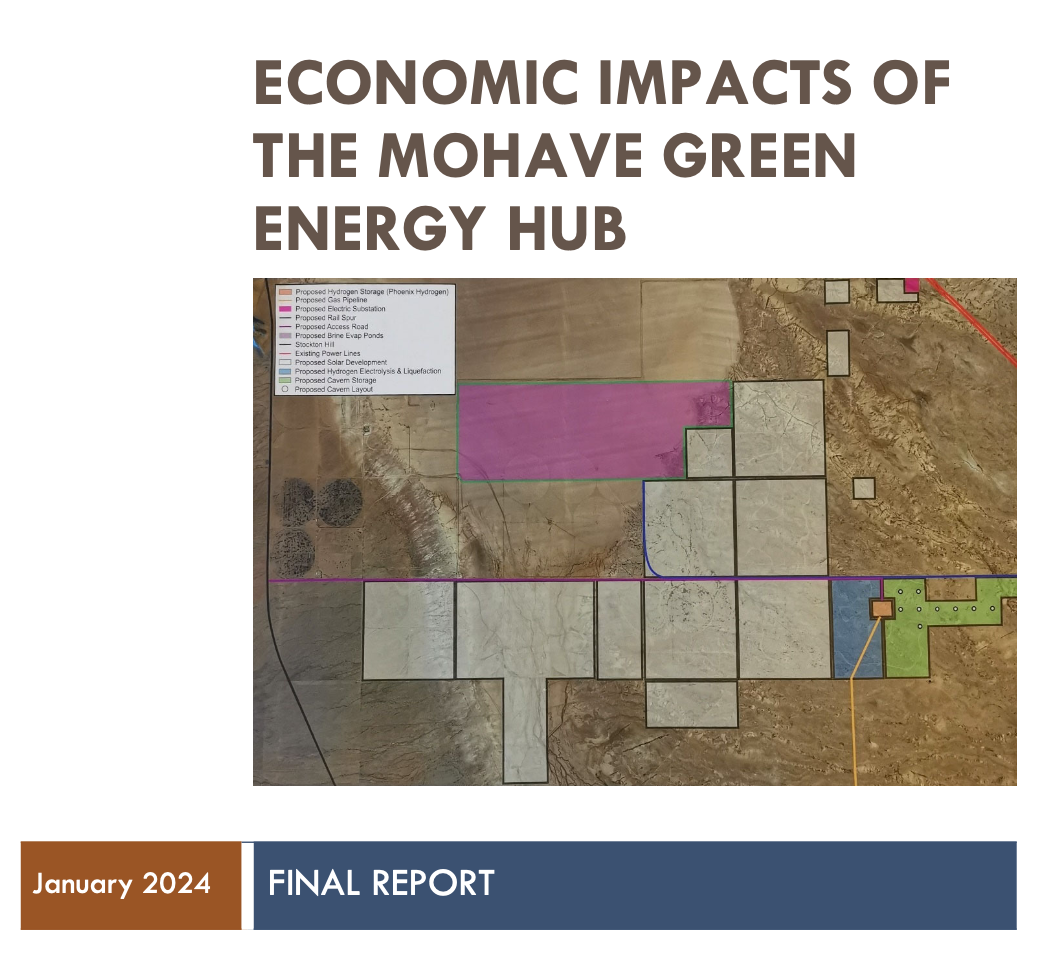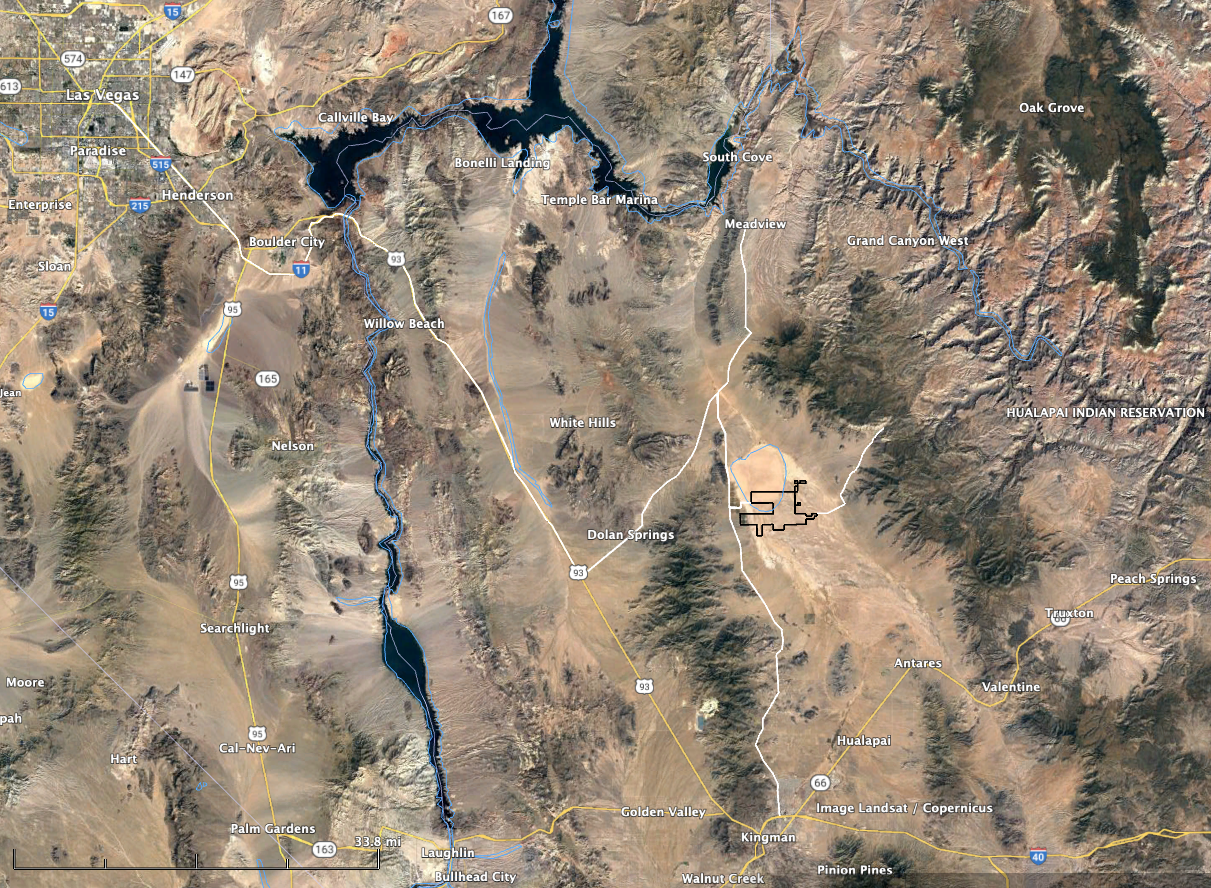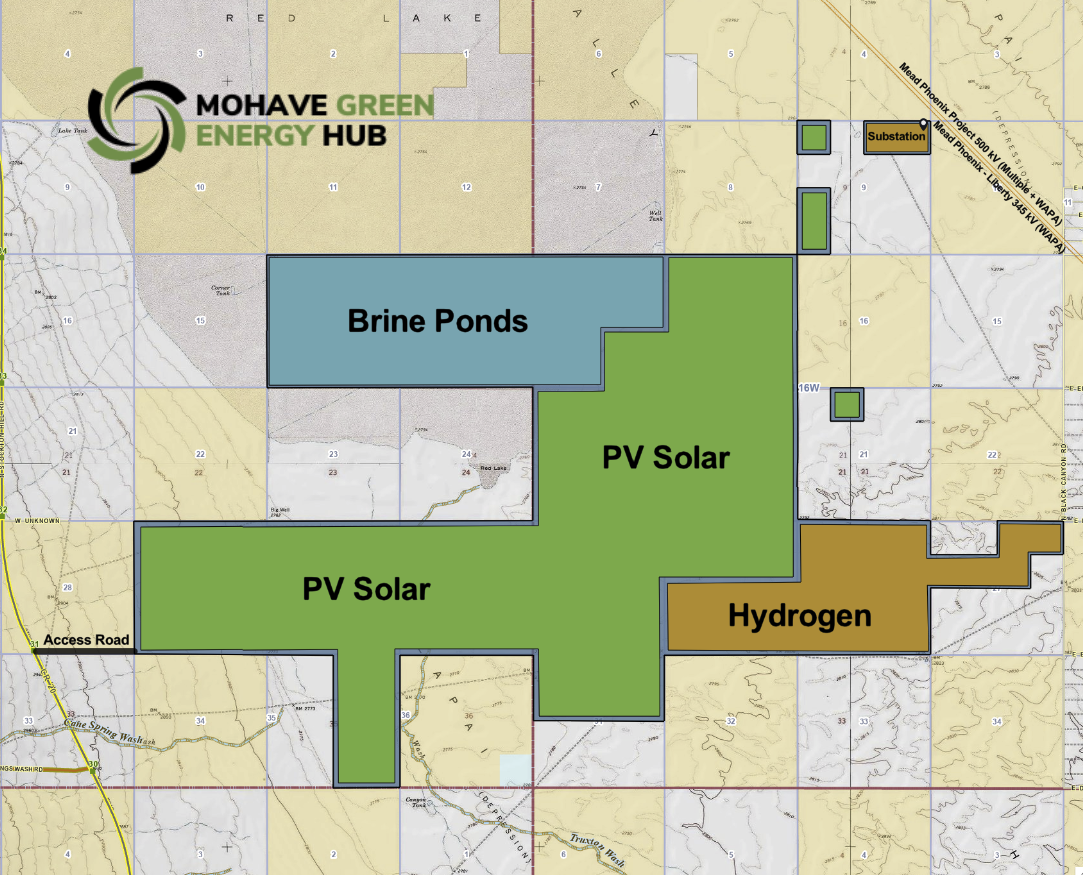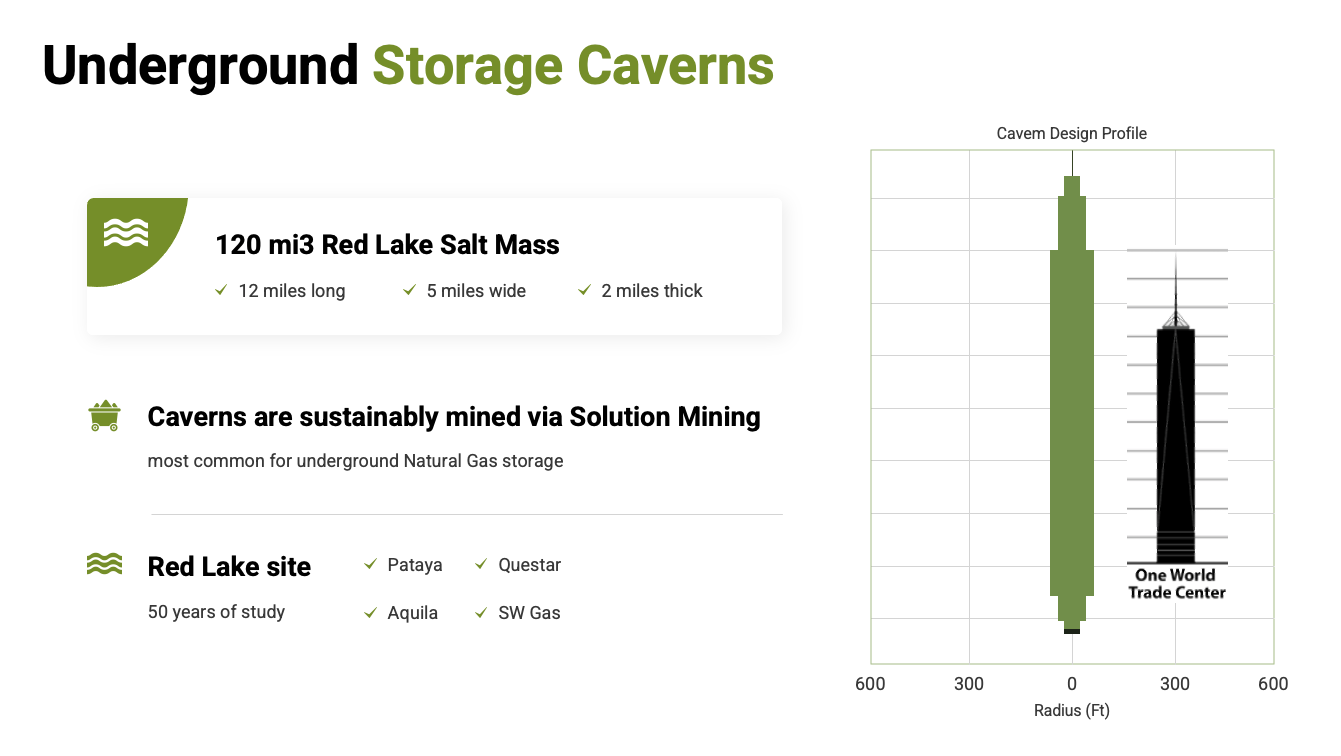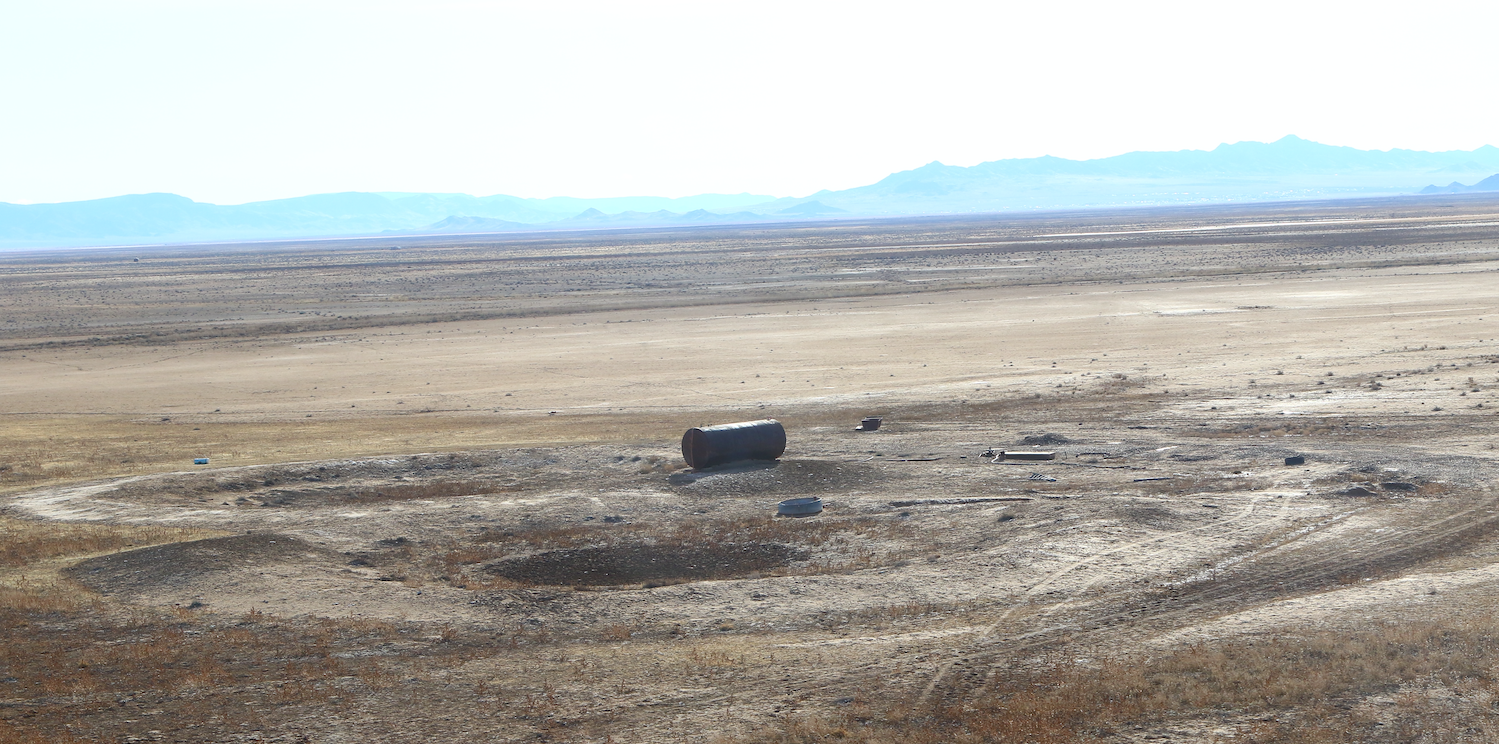Client: Diversified Hydrogen /
Location: Mohave County, Arizona /
Services: greenfield development /
The Mohave Green Energy Hub is an ambitious renewable energy project planned for development in Mohave County, Arizona, approximately 100 miles south of Las Vegas. Covering 8,760 acres of private land, with potential to expand to 20,000 acres, the project is located 25 miles north of Kingman, Arizona. It is designed as a multimodal renewable energy project, comprising solar power generation, clean hydrogen production, hydrogen storage, and distribution infrastructure.
A key feature of the project is the planned 30,000 metric ton hydrogen salt cavern storage asset, which will provide 1,000 GWh of energy storage capacity when fully developed. This underground storage will be created by sustainably mining the 120 cubic-mile Red Lake Salt Mass beneath the site. The project also includes large-scale solar PV installations of up to 1.8 GW, coupled with electrolyzers for green hydrogen production.
The Mohave Hub plans to include a 30 tonnes per day liquid hydrogen facility with 150 MT of storage capacity. To support operations and distribution, the project will feature a hydrogen pipeline, rail spur, and electrical substation. The site has a certified 100-year assured water supply of approximately 10,000 acre-feet per year, which is crucial for the project’s operations.
The project is designed to be environmentally beneficial, aiming to preserve 35,000-54,000 acre-feet of water annually compared to alternative agricultural use of the land. It’s being developed in phases, with initial operations set to begin in 2028 and full operations by 2030.
The Mohave Green Energy Hub is expected to create significant economic benefits, including job creation, revenue generation, and contributions to the local and regional economy. It represents a major step in developing large-scale renewable energy and hydrogen infrastructure in the southwestern United States, aiming to play a crucial role in the transition to cleaner energy sources.
The project site is divided into specific land use allocations: 5,760 acres for renewable energy use (PV Solar), 1,240 acres for heavy industrial use (storage, electrolysis, liquefaction, rail/pipeline operations), and 1,760 acres for brine pond use. Multiple tenants will occupy the hub, each independently developing, owning, and operating their respective projects.
Mohave Hydrogen Storage, LLC will develop the underground storage in two phases. Phase 1 (2028) will provide 15,000 MT of usable clean hydrogen at 3,000 PSI, equivalent to 500 GWh of stored energy. Phase 2 (2030) will double these capacities. Two other tenants (referred to as Tenant A and Tenant B) will develop solar and electrolysis facilities, with plans for significant expansion over time.
The project includes plans for a bidirectional hydrogen pipeline to a junction point approximately 30 miles from the site. This pipeline will facilitate hydrogen transport both to and from the site, serving major hydrogen markets in California, Arizona and Nevada. A rail spur will also be constructed to connect to the national BNSF rail network, enabling transportation of salt, liquid hydrogen, construction materials, and other future products.
Sustainability is a key focus of the Mohave Green Energy Hub. The project plans to use clean transport methods, including hydrogen fuel cell and electric vehicles for material and product transportation. All vehicles regularly transporting materials and products to and from the hub will be HFC/EV once such fleets are available, including the rail spur locomotive.
Construction of the Mohave Green Energy Hub is set to commence in 2025 with completion expected by 2030. The project has already achieved several milestones, including site control and completion of a Phase 1 Environmental Site Assessment.
